

This webpage won't be updated anylonger.
Please visit: www.gerhardsengerner.com


Xabier Salaberria
Poster, 2006, 42 x 59,4 cm
designed for the Attitude show

Xabier Salaberria
Poster, 2006, 42 x 59,4 cm
designed for the Attitude show
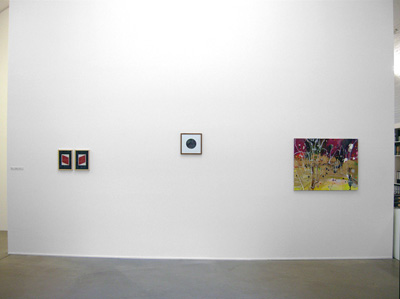
Martin Hoener
Installation view

Martin Hoener
Allee im Schneegestöber, 2005
Oil on canvas, 80 x 100 cm
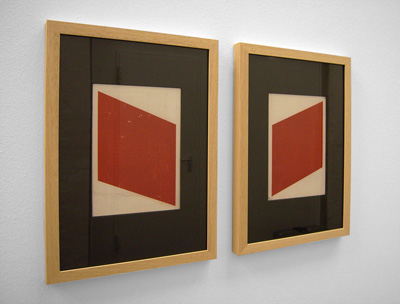
Martin Hoener
Hinten, 2004
Vorne, 2004
C-prints on photographic paper, 17 x 12 cm (30 x 21 cm framed)
No. 3 of ed. 5 + 1 AP

Martin Hoener
Unser Kopf ist rund, damit das Denken die Richtung wechseln kann,
2006
C-prints on photographic paper, 21 x 29,7 cm (30 x 30 cm framed)
No. 1 of ed. 9 + 1 AP

Hilary Lloyd
Untitled (Cut-Outs), 2006
80 Slides, Kodak EKTAPRO 9020 Slide Projector
Unicol Projector Stand, Variable Dimensions
Ed. of 3 + 1 AP

Hilary Lloyd
Untitled (Cut-Outs), 2006
80 Slides, Kodak EKTAPRO 9020 Slide Projector
Unicol Projector Stand, Variable Dimensions
Ed. of 3 + 1 AP
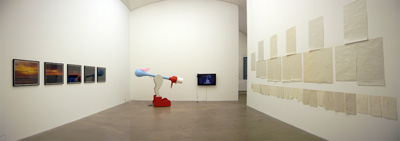
Installation view
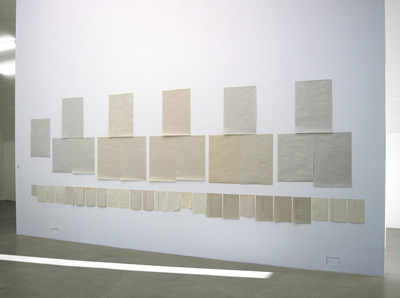
Sue Tompkins
Untitled, 2006
18 sheets of newsprint , 71,1 x 50,8 cm
Your side effect, 2006
36 sheets, variable paper, Variable dimensions
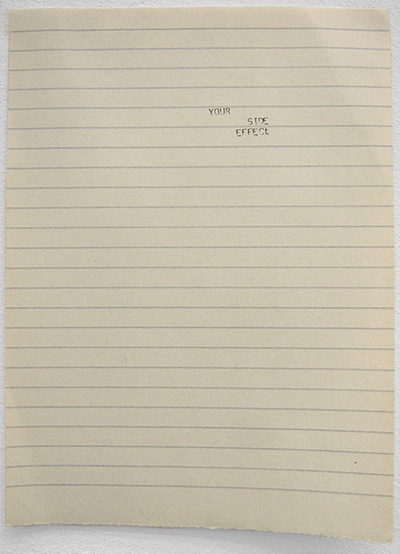
Detail:
Sue Tompkins
Your side effect, 2006
36 sheets, variable paper, Variable dimensions

RIDE1: Stig Sjölund, Jonas Kjellgren, Ronny Hansson
Alien vs Ride1, 2006
75 x 75 x 250 cm, Plastic, wood, iron + DVD
(2 part installation), Ed. of 6

RIDE1: Stig Sjölund, Jonas Kjellgren, Ronny Hansson
Alien vs Ride1, 2006
75 x 75 x 250 cm , Plastic, wood, iron + DVD
(2 part installation), Ed. of 6

RIDE1: Stig Sjölund, Jonas Kjellgren, Ronny Hansson
Alien vs Ride1, 2006
75 x 75 x 250 cm, Plastic, wood, iron + DVD
(2 part installation), Ed. of 6

Maria Loboda
Spiritualism, constituted by the rules of abstraction, 2006
Djinn, talisman, formula
Variable dimensions, Permanent installation
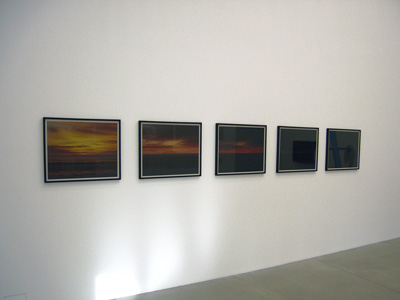
Mandla Reuter
Untitled 1–5, 2006
(Photographs by Jeffrey Kocher, Los Angeles 2006)
61 x 50 each (67 cm x 56 cm framed)
Ed. of 3 + 1 AP

Mandla Reuter
310506 Cinestar Original, 2006
1 hour 46 minutes, Unique

Itziar Okariz
Peeing in public or private spaces, 2001–06
Video, 8 minutes, Ed. of 6 + 2 AP
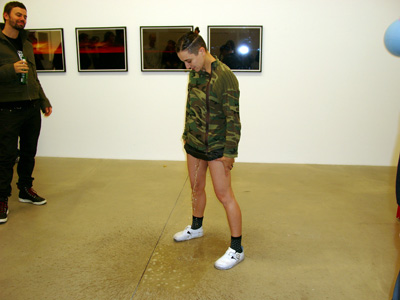
Itziar Okariz
Peeing in Public and Private Spaces: c/o – Atle Gerhardsen, Berlin,
Nov 18
2006, Performance, Photograph by Xabier Salaberria

Itziar Okariz
Peeing in Public and Private Spaces: c/o – Atle Gerhardsen, Berlin,
Nov 18,
2006, After performance, Photograph by Xabier Salaberria

David Lamelas
Pared doblada, 1994
3 cardboard boxes each containing one sheet of folded paper
Dimensions of the boxes: 2 x (50 x 45,7 x 8,6 cm), 1 x (55,7 x 44,1 x 6,5
cm)
Dimensions of the paper sheets: 4 x (238 x 86) cm, Ed. 1
Pressrelease
DON’T GIVE ME THAT ATTITUDE Attitude is seeing how far you can go. It
is the characteristic and controlled manner in which you do the things you
do, or it can even be a kind of weapon. It is the way you pace and perform
your appearance, how your intentions are played out and resonate in other
people. It means defining the threshold of your personality, and how this
threshold is to be perceived by others. A good attitude defines space without
being territorial: it is a dynamic catalyst in social processes - a magnet
for the gaze, the site of a struggle and an exercise of freedom. Because it
is disruptive, you could say that attitude destabilises middle class ideology.
Whereas the middle class is oriented towards a normality that bypasses difference,
hence requiring no articulation, attitude is neither defensive nor conformist.
An attitude is the open negotiation of what or who society expects you to
be, in relation to your gender, body, ethnicity, class or subculture, education,
sexuality etc. As such, it is associated with style, but is by no means synonymous
with it. Unlike style, attitude isn’t only visual or aesthetic, it is
also determined by social intelligence and behaviour (pride, self-respect).
It goes beyond concepts that organise style, such as coherence and collective
ritual – in other words, style can be appropriated, attitude cannot
(if you appropriate an attitude you are a fake). In this sense, the function
of attitude is its subjective interpretation of the revolt of style. As a
friend of mine who was a punk in the 1970s lamented a few years ago: “Punk
doesn’t mean anything anymore. Today it only means that you are an aggressive
bum.” Good style is no guarantee for a good attitude.
The Attitude exhibition is not just about sassiness, or the appearance of
the self, but also examines how forms can become an attitude. Art with an
attitude confounds our expectations of the medium and location of the work’s
presentation, thereby conveying a strong performative dimension: it assures
a certain intimacy with the beholder, and emphasises - often in a gestural
way - the singularity of each piece vis-à-vis other art works. And,
to be sure, attitude is also an artistic strategy of how to relate to the
role of the artist.
THE ARTISTS In the installations, environments and designs of Xabier Salaberria
(1969, Donostia / San Sebastián), graphic and industrial forms become
formats for social interaction. Some of his works are made for specific functions
(such as the bar environment he created with Gorka Eizagirre for the Frankfurter
Kunstverein, 2006, quoting the spatial politics of the traditional Basque
tavern, the sidraria), while others take the simple and un-specific form of
big slabs of concrete that invites (rather than prescribes) collective activity
in public space (for example Plataforma de hormigon, Donostia / San Sebastián,
2002). The poster he designed for the exhibition suggests how attitude is
something that is not natural or given, but rather produced with and between
positive and negative, dynamic and static elements, in order to open up to
new possibilities. At the same time, the pictorial elements in the poster
seem to encourage intervention or resistance, clearing a space for something
unforeseeable or undetermined to take place.
The Stockholm-based collaborative Ronny Hansson, Jonas Kjellgren and Stig
Sjölund have worked together since 2004. With a humorous, anti-authoritarian
ethos, their works debunk morality and comfort, such as their amusement park
rides that confront the beholder with laconic dysfunction: the one-person
Ferris wheel that takes the beholder for an excruciatingly slow 360° ride,
or the conveyor belt that takes you into the air only to drop you on a mattress.
Anyone for interactive art? Their work for the Attitude show, Alien vs. Ride.1
(2006) consists of a 2,5m tall kinetic sculpture of a bird with a top hat
and orange boots. The bird tilts purposelessly back and forth and creates
a danger zone as its pointed beak descends from above. The bird responds to
a video in which the artists re-enact the first scene of the space horror
movie Alien. In this, a “dippy” or “happy bird” –
the little movable object that was a domestic design fad in the 1970s and
very common in homes as well as on office desks – appears inexplicably.
In Alien vs. Ride.1 a fascination with popular culture is laced with the desire
to challenge the art space’s rationality as well as the physical integrity
of the beholder.
Maria Loboda (Krakow, 1979) has cast a spell on the Attitude exhibition. Or
more precisely, she has bought a so-called Giant Formula from an Indian shaman
which she donated to c/o gallery. The formula includes a step-by-step prescription
for evoking the benevolent giant genie Saleemi. Whoever follows the formula
– in this case Atle Gerhardsen, on behalf of the gallery where Saleemi
will reside – will conquer Saleemi and its supernatural powers. The
powerful giant has a human shape and will be visible only to the person who
follows the formula. The shaman promises that it is in Saleemi’s powers
to (among other things) convert living organisms into stone, change coals
into treasures, impart the secret of invisibility, provide longevity up to
several hundred years, heal the sick, provide good fortune in lotteries, bring
back runaways, learn languages, procure love and give great honour in military
affairs. Saleemi has been acquired at the price of 150 US$ and is a permanent
installation in the gallery space at c/o – Atle Gerhardsen.
The work of Itziar Okariz (Donostia / San Sebastián, 1965) is based
on performances in which she challenges spatial and cultural limits. In her
video Mear en espacios públicos o privados / Peeing in Public or Private
Spaces (2002), the artist is seen urinating in public and private spaces in
New York: on a bridge, in a subway station, in a parking lot, in a hotel room.
The acts are performed standing up, with neither shame nor secrecy, and usually
in the daytime. The image of the artist urinating subverts visual and spatial
regimes that has historically segregated the female body and rendered it invisible.
But more than subverting gender constraints, the artist’s urinating
has the detached character of a ritual. This is territorial pissing as defiant
production of space, a rock’n roll posture: as the rock singer masters
the stage and “gives herself” to the audience in a gesture of
sincerity, Okariz also takes the space around her by literally giving something
of herself. As a private act turned inside out, peeing becomes a way of demonstrating
control over a situation – if only fleetingly. For the opening of Attitude,
Okariz will perform Peeing in Public or Private Spaces.
Mandla Reuter (Nqutu, 1974) shows two works in the exhibition. One is the
series of photographs Untitled 1–5 (2006) (photographs by Jeffrey Kocher)
that follows a sunset ad absurdum: between the first and the fifth picture,
the beautiful red and orange hues of a Los Angeles sunset fade into an indifferent
and uncommunicative black, as if it were the end of a Hollywood movie that
continued for a second too long, entering into a moment where the beholder
faces collapsed expectations of beauty and emotional intensity. Babylon (2005)
consists of a soundtrack of a blockbuster movie played back in the gallery.
Recorded during a screening in a movie theatre, the soundtrack is accompanied
by the audience’s coughs and crackling of sweets bags, thereby making
it a “polluted readymade”. By lifting the soundtrack a transport
of spaces is brought about: the illusory space of the movie industry is added
to the gallery, while the memory of a film is simultaneously conveyed and
withheld.
Attitude is often viewed quantitatively: it is noticed if you have a lot of
it. However, the work of Sue Tompkins (Leighton Buzzard, 1971) is pared down
and created with poor materials, and precisely by these means, it insistently
creates its own space and logic. Her installations and spoken word performances
revolve around the use of language: her minimally brief poems are poised on
pieces of paper – stationary, butcher’s wrapping paper, ruled
paper – and interspersed with coloured cardboard geometry. In the visual
silence around the poems, you begin to notice smallest of details –
the way they are typewritten, the creases in the paper. Their frail and exposed
position on the white expanses (or the way they are voiced in the silence
of a room) seems to make them prone to repetition and to significant typos
and neologisms, between which a colloquial tone meets structure and order.
Or the poems appear as something vaguely familiar, as if they were hit songs
from a parallel universe. Tompkins’ work spans a gap between the abstract
playfulness of conceptual art, and the emotional and associative fringes of
the information buzzing around our heads in the mass media galaxy.
Hilary Lloyd (Halifax, 1964) does not do portraits, but rather depicts the
poses and subtle acts that establish relations between strangers. As such,
her pictures of people have less to do with identity (who we “really”
are) than with the way we perform ourselves through ordinary acts. The subjects
in her work are people she has approached in clubs and bars, and their urban
anonymity is maintained: in a certain sense we see nothing more of them than
we would if we met them on the street. What we do see is what the writer Jan
Verwoert, á propos of Lloyd’s work, has called an “existential
glamour that defies easy categorisation”. For example, in Colin #2 (1999),
Lloyd asked a young man to take off a red tank-top and put it on again, as
slowly as possible – each time takes ten minutes, in self-imposed slow-motion.
Her work in Attitude is Untitled (Cut-Outs) (2006), projecting a slide series
of men’s crotches that are taken from fashion magazines. By focusing
on these sexualised poses, Lloyd satirises masculinity by the simplest of
means – repetition. In this sense, the work is a battle between attitudes:
the hysteric, phallic postures of the faceless men in the photos versus Lloyd’s
lingering, continuous focus.
Since the mid-1960s, David Lamelas (Buenos Aires, 1946) has developed an ephemeral
and peregrinating artistic project that focuses on the parameters of time
and space, which he has analysed in post-minimalist installations and performances,
as well as in photos and film. His work seems to be focused in part on creating
value-free conditions for recording time and for the observation of space.
Characteristic of this attitude, he said in an interview from 1972, “It
is impossible for me to make definitive statements. A piece is defined by
the person who looks at it.” Departing from conceptual and minimal art,
he is also fond of dramatisation as artistic strategy, as for example shown
in the Rock Star – Character Appropriation photos (1974), in which he
poses as Rock God on stage. He has also directed the professionally produced,
feature length film Desert People (1974). In Pared Dobleada (1994), Lamelas
revisits a recurring theme in his work, namely the modification of space.
The “doubled wall” is a kind of wallpaper made to cover the wall
on which it was originally shown as an artwork; or you could say it is a copy
of the wall that made it an art work in the first place. It is a gesture that
re-defines the frame of the white cube and the virtuality of the gallery space,
while also pointing back to the seminal exhibition When Attitudes Become Form
(1969), which helped shape the idea of processes in art within a minimalist
and conceptual aesthetic.
Martin Hoener (Wedel, 1976) works with multifarious styles and media as a
way to foster an open potentiality: his is a strategy of exploration by means
of simultaneous choices, in an attempt to transform restrictions into openings.
The photo Our Head is Round, Therefore We Can Change the Direction of Our
Thinking (2006) is a superposition of a photo of the night sky of southern
hemisphere on a photo of the night sky of the northern hemisphere. As a cosmic
image that connects and interweaves opposites, Our Head is Round becomes a
kind of allegory on the nature of art as it speculates on the possibility
to connect duality and difference in one, and the ability to look in several
directions at the same time… Allee im Schneegestöber (2005) is
Hoener’s version of Edvard Munch’s Avenue in Snow (1906). Ostensibly
made with the ambition to redo the painting better than Munch, Hoener has
turned the great Norwegian modernist’s clear and frosty vista into a
depopulated and almost psychedelic, purple and brown surface. What at first
comes across as pure attitude is, on second thought, a sincere homage rather
than an artistic parricide. Hinten and Vorne (2005) are graphic renditions
of the back and front cover of a Merve Verlag edition of Brian O’Doherty’s
classic text Inside the White Cube (1976). This book about the ideology of
the gallery space has been reduced to two hard-edged geometrical shapes, and
with its title and author removed, the critical excavation of the white cube
becomes two red eyes staring angrily back at the beholder.
Lars Bang Larsen